WHAT IS A VISA RUN?
A visa run is a trip to a neighboring country to renew your visa status. Pre pandemic, Vietnam had a more flexible policy regarding visa extensions & visa on arrivals. Just like it ruined everything else, the COVID pandemic halted the ability to go to a local office and extend your visa past 30 days. In 2023, the only way to travel in Vietnam for more than 30 days is to reset your visa by leaving to a neighbouring country and coming back in. From Ho Chi Minh City, the closest & easiest land border to do a visa run to is the Moc Bai/Bavet Land Border with Cambodia.
This is a big industry in Vietnam, and there are plenty of companies that help you organise buses to and from the border, help you with all the paperwork, and escort you through it all. However, these services come at a premium cost. Every company we reached out to quoted us minimum of $60 USD round trip per person, not including the visa costs. There also used to be a public bus that ran everyday directly from central Ho Chi Minh to Moc Bai, but that bus had stopped running for undisclosed reasons.
After lots of research and only a mild bit of panic, we decided to rent a scooter and drive there ourselves. Here’s how we did it & how much everything cost.
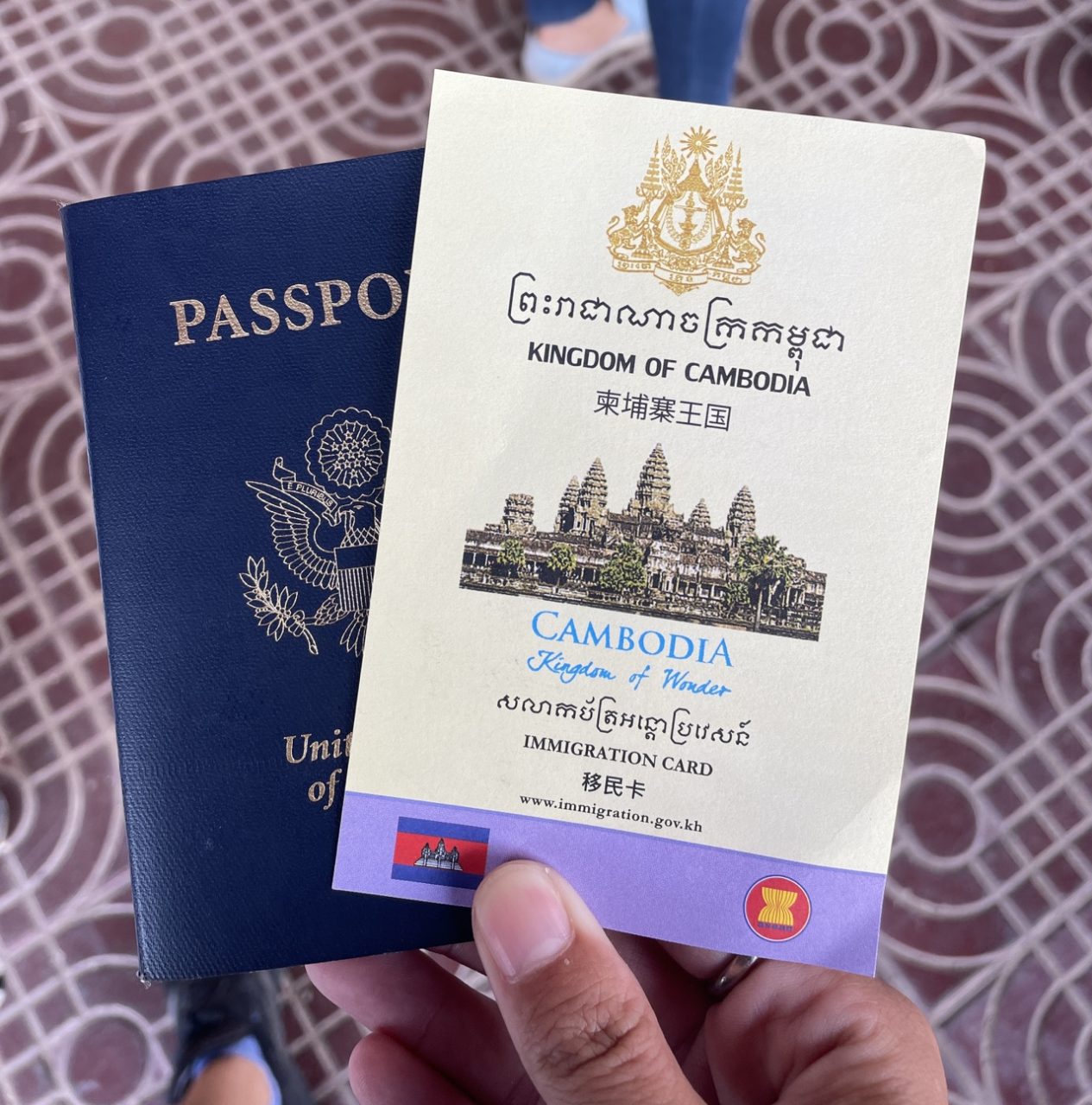
STEP 1 – APPLY FOR YOUR NEW VIETNAM EVISA WHILE STILL IN COUNTRY
The Vietnam eVisa is available for citizens of 80 countries. Some countries are visa exempt for 15 days to Vietnam, but we have USA & Canadian citizenship, so we had to get a visa. To check whether your passport is eligible, click here. The eVisa costs $25 USD and takes about 3-5 business days to process. The good news is, you can apply for the eVisa while you are still in Vietnam, so you don’t need to be stranded outside the country while waiting for approval. The application is fairly straightforward, but one very important thing to note is you MUST fill in the correct entry point that you plan on entering from. If you write on your application that you are entering Vietnam from the Hanoi Airport, and actually show up at the Moc Bai Land Port, they will not let you in.
You also need to be accurate on which date you plan on doing your visa run, because even if your eVisa is approved, you will not be allowed to enter before the date written on your application.
However, if you don’t apply far enough in advance and your visa hasn’t been approved on the date you were planning to do your visa run, you don’t have to apply for a new one. Just wait until you get approved, and do the visa run that day. All it does it is shorten your 30 day window, because your visa will still expire on the date that is 30 days after your originally applied for. You can enter Vietnam any date after your listed entry date, but not before.
Once your new eVisa is approved, make sure you have it printed out. They will ask to see a paper copy! You also need to have a printed copy of your current eVisa, as you will need it to stamp out of the country.
To apply for the Vietnam eVisa, click here.
STEP 2 – RENT A SCOOTER
*DISCLAIMER – TRAFFIC IN HCM IS HORRIBLE! DRIVING HERE IS GENUINELY SCARY AND STRESSFUL AND WE ONLY RECOMMEND YOU DO THIS IF YOU ARE VERY COMFORTABLE DRIVING A MOTORBIKE AND DON’T HAVE ROAD RAGE*
The Moc Bai Land Port opens at 7 am, and is about a 2 hour drive from HCM, so we opted to rent our scooter the evening before. All scooter rentals in Vietnam are for 24 hours, so we rented it at around 6 pm the day before we were planning on doing the trip. The scooter cost 150,000 VND ($6.30 USD) for the day. We wanted to get there as early as possible to try to avoid as much traffic as we could and get the visa run over with, so we took off bright and early at 5 AM.
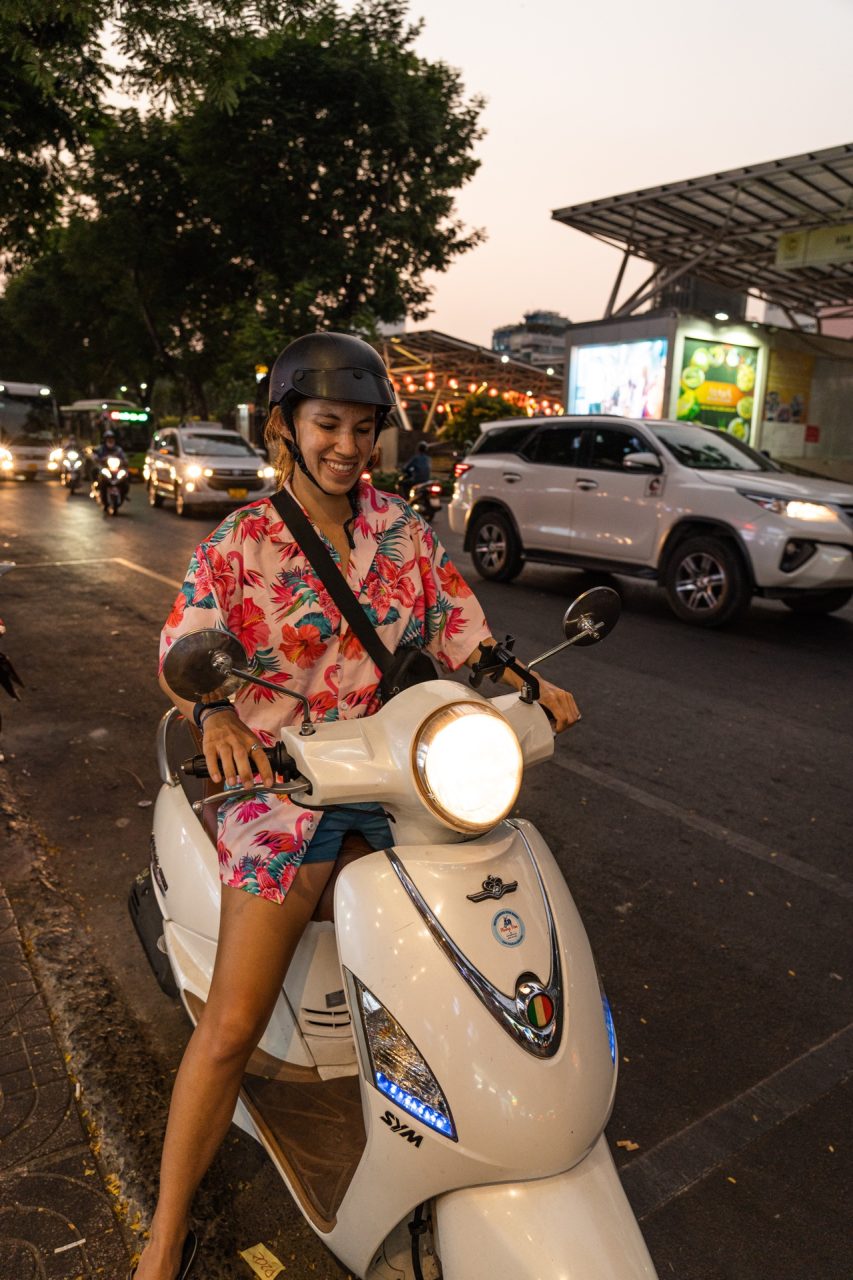
Unfortunately for us, our plan backfired because HCM is apparently the city that never sleeps! We thought that if we left early enough, we’d have the roads to ourselves and it would be easier to drive. IT WAS NOT! We were on the road by 5 am and the roads were already packed. Plenty of stalls/stands looked like they had already been set up for hours. There were buses, cars, motorbikes, and pedestrians everywhere! It was practically just as stressful as driving at any other time of day, but also dark.
About 1 hour of the 2 hour drive to the border is just getting out of the city. This is by far the worst part of the drive. Nobody seems to look where they’re going, people are constantly honking, running red lights, and cutting you off. I’m a very confident scooter driver and I was mega stressed out driving in this city.
Once you get out of the city, the drive gets easier, but only because there are less cars, not because the drivers are any better. Channel your 15 year old self at drivers ed learning about DEFENSIVE DRIVING and DO THAT!
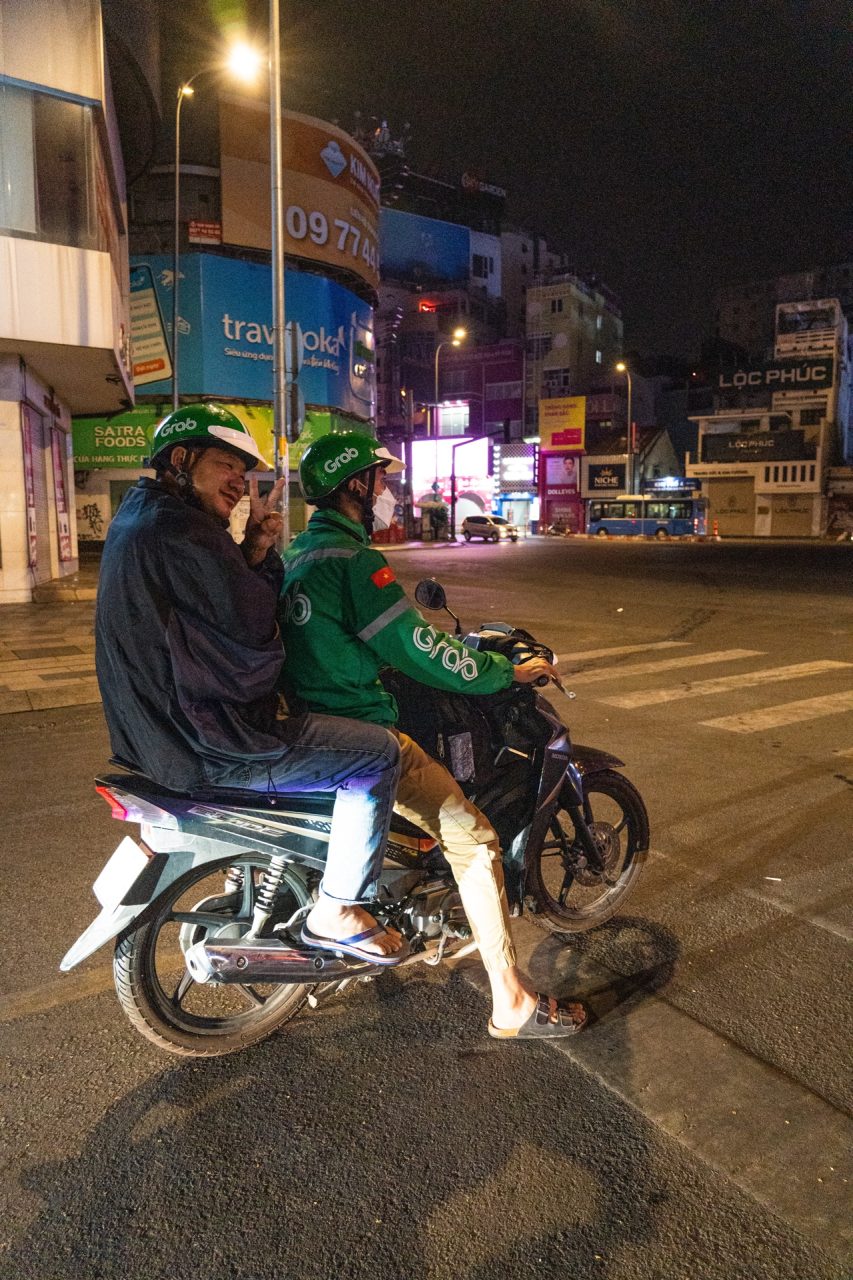
STEP 3 – PARKING
There are plenty of little coffee shops/stalls right outside the Moc Bai border entrance (less than a 1 minute walk) that you can park at. You will likely get swarmed by the owners asking if you need a guide to accompany you through the process (for a fee of course), but there is no need. We politely declined their offers for a guide but asked if we could park there & they said yes.
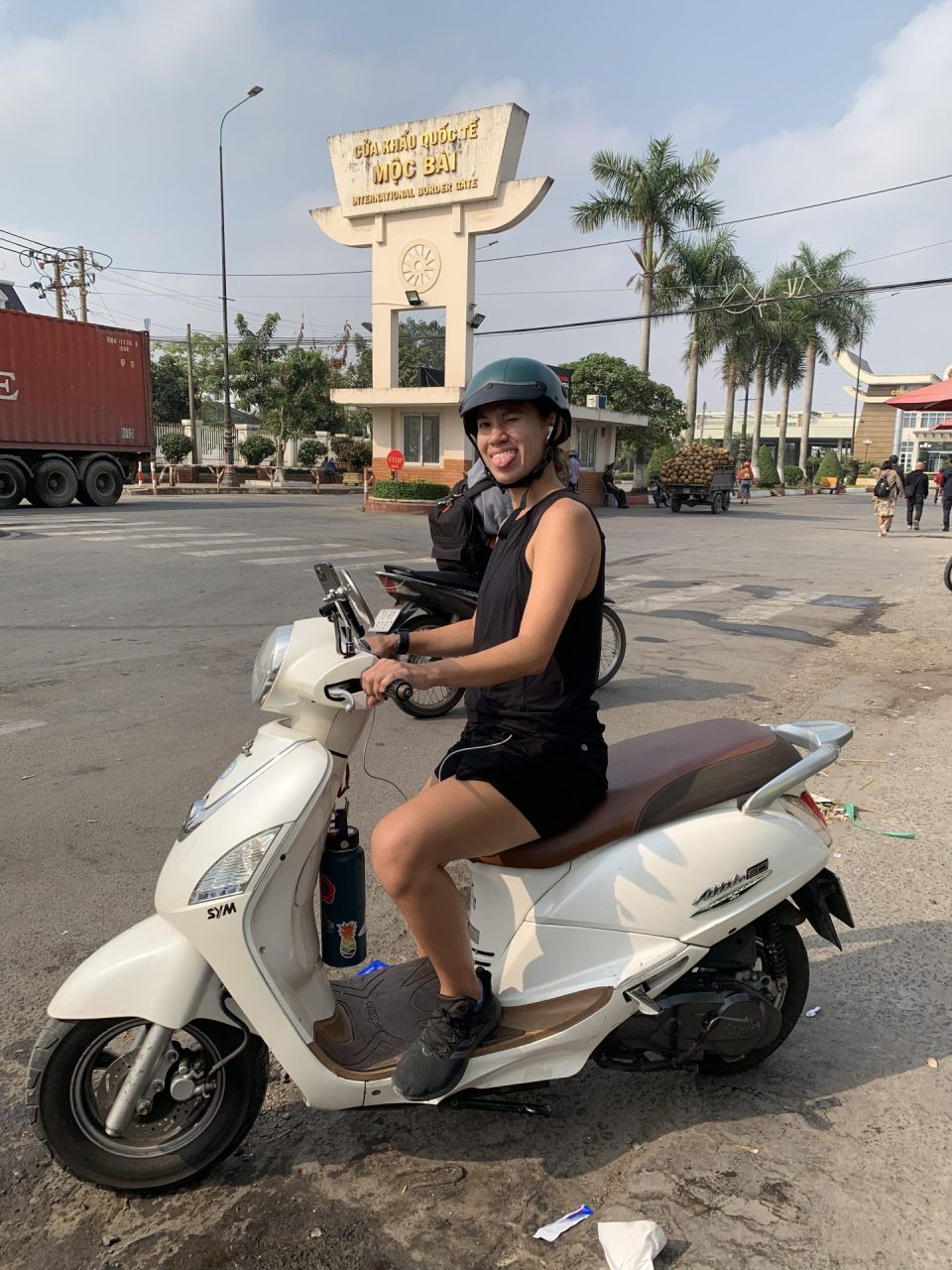
STEP 4 – EXIT VIETNAM
After parking, walk towards the entrance of the Moc Bai border. Follow the signs for “EXIT PROCEDURE BY PASSPORT” and wait in line to get stamped out of Vietnam. Anybody who has hired a “guide” is able to just skip to the front of the line, so despite there only being 8 or 9 people ahead of us in line, we kept being cut by other groups that had a guide. We ended up waiting over 30 minutes until we reached the front of the line.
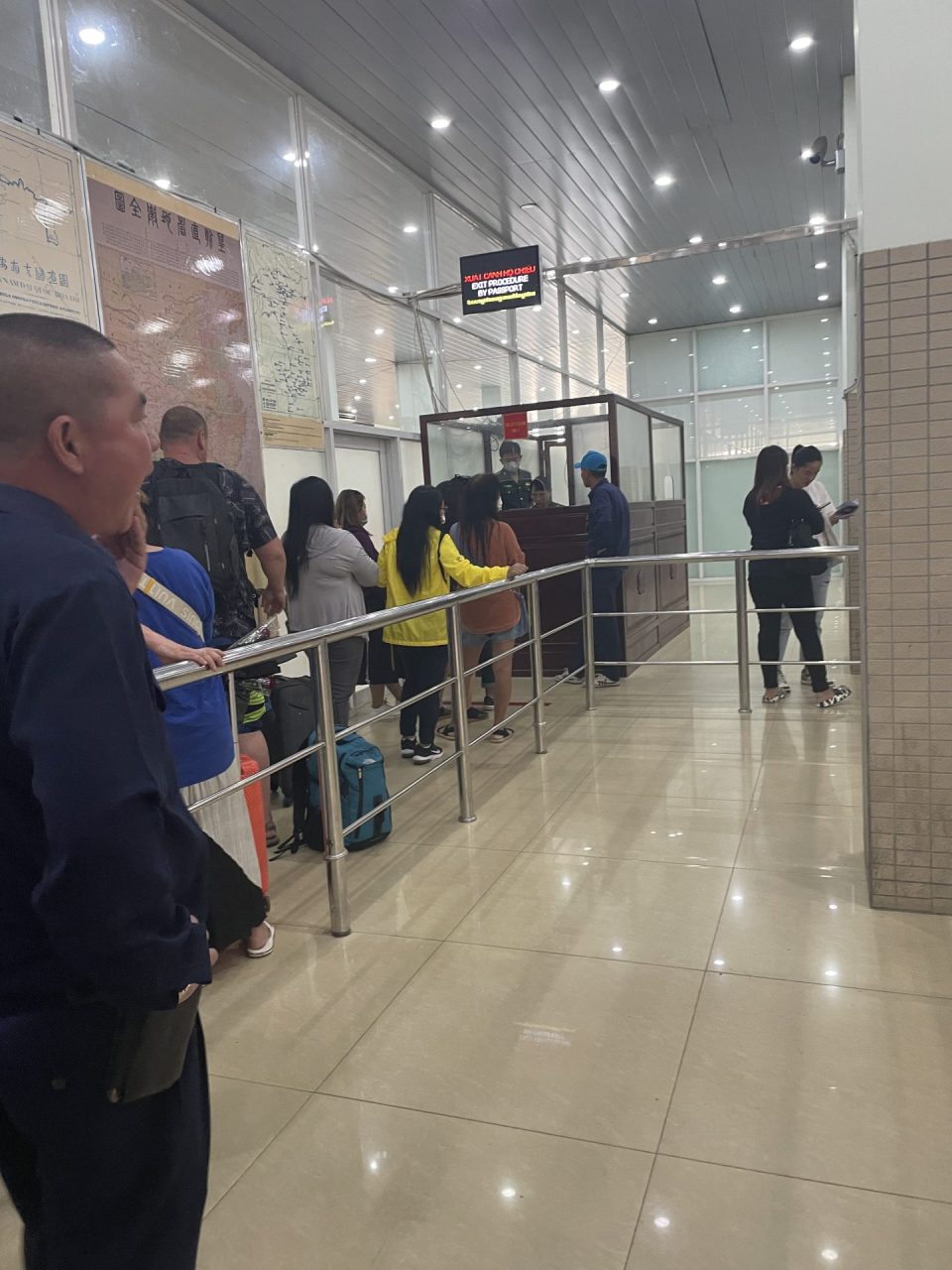
MAKE SURE that you have a printed copy current eVisa, because they asked to see it in order to be stamped out of the country. Some people have anecdotally said that they didn’t need a paper copy of their current eVisa to get stamped out, but better safe than sorry as you might be asked to pay a “fee” *cough bribe cough* if you don’t have it.
Once you get stamped out of Vietnam, you walk straight out of the building. There is a duty free shop if that’s your thing!
STEP 5 – NO MANS LAND
Once you leave the Vietnam immigration building, there is an approx. 100 metre walk to the Cambodian border. There are people there on scooters offering to shuttle people back and forth, again for a fee.

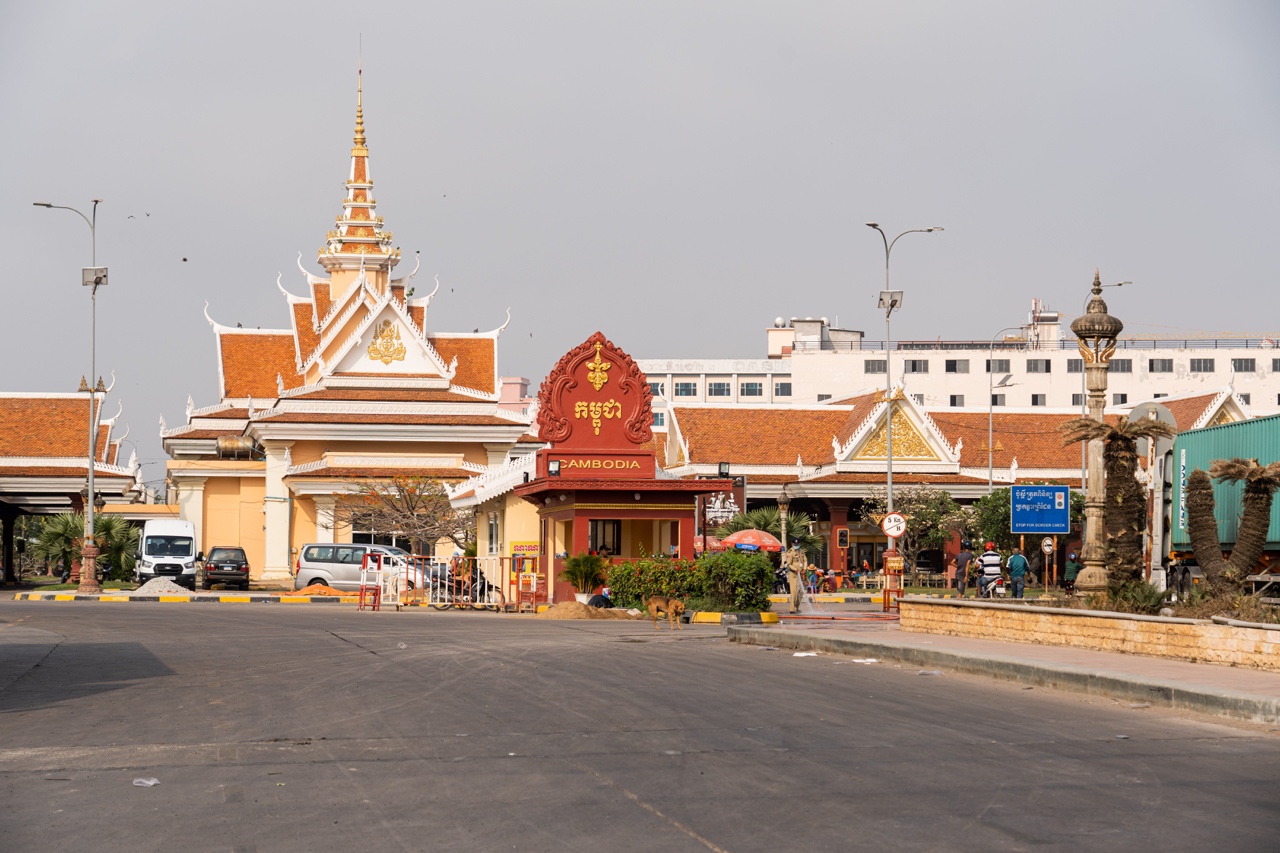
STEP 6 – APPLY FOR CAMBODIAN TOURIST VISA ON ARRIVAL
Walk up to the Cambodian side of the border, and you’ll see a building that has a “VISA” sign. Every nationality (except for the 8 countries that get visa free access to Cambodia) is eligible to apply for a 30 day tourist visa on arrival. There is a sign that lists out the prices for different types of visas, which says the tourist visa is $30 USD. However, when we walked up, the border guard insisted that the visa cost $35 USD so we were forced to cough up the extra money. I’m not sure if the official was pocketing the extra money, or if the visa is genuinely more expensive and they just haven’t gotten around to updating their sign.
The border guard will hand you an arrival card to fill out, and the visa fee needs to be paid in cash in USD. The arrival card has a few sections that are irrelevant to fill out, such as flight number, address is Cambodia etc. so we just left those blank.
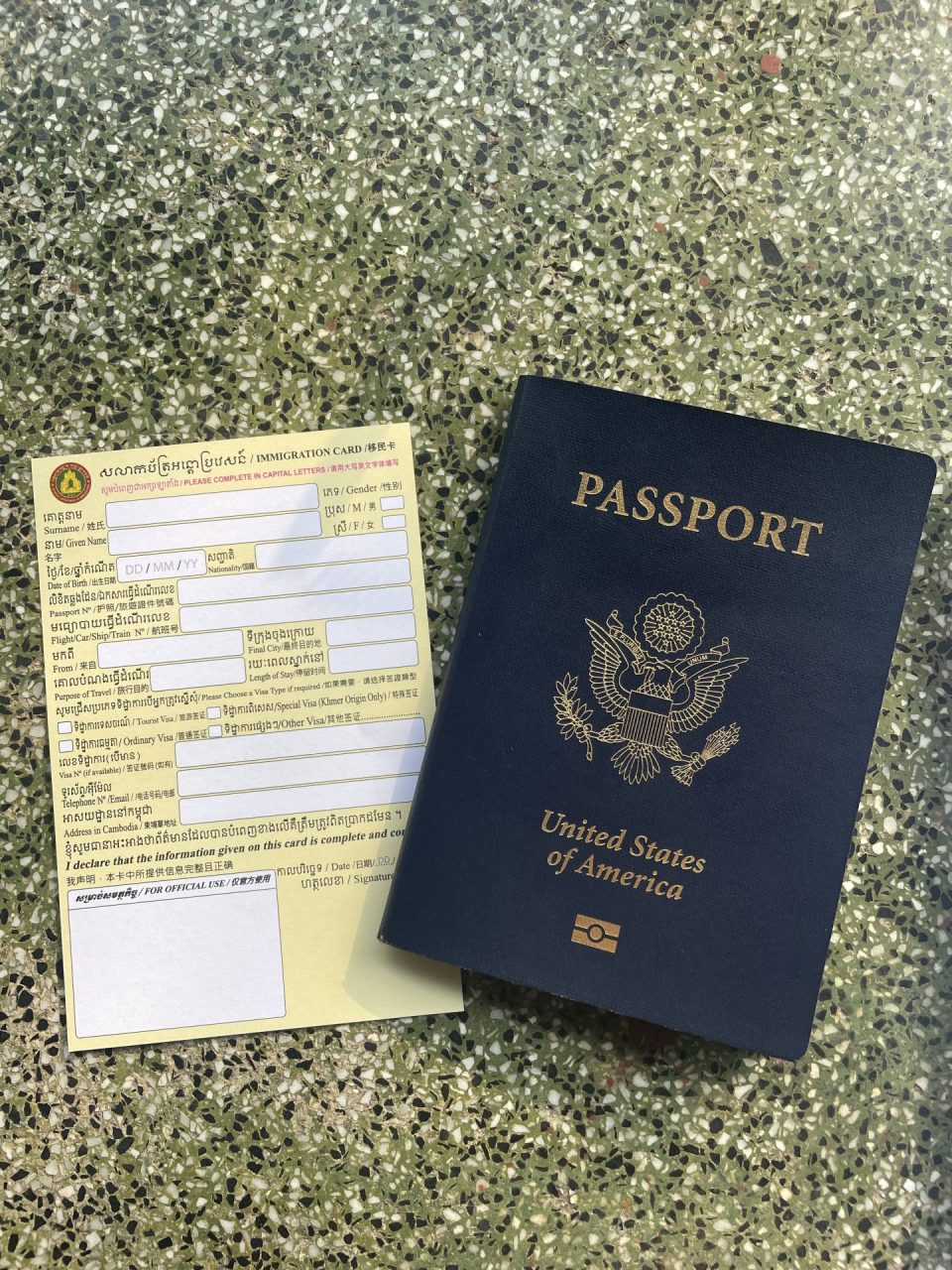
They took our arrival cards and passports, and we waited for about 5 minutes to get our visa put into our passports.
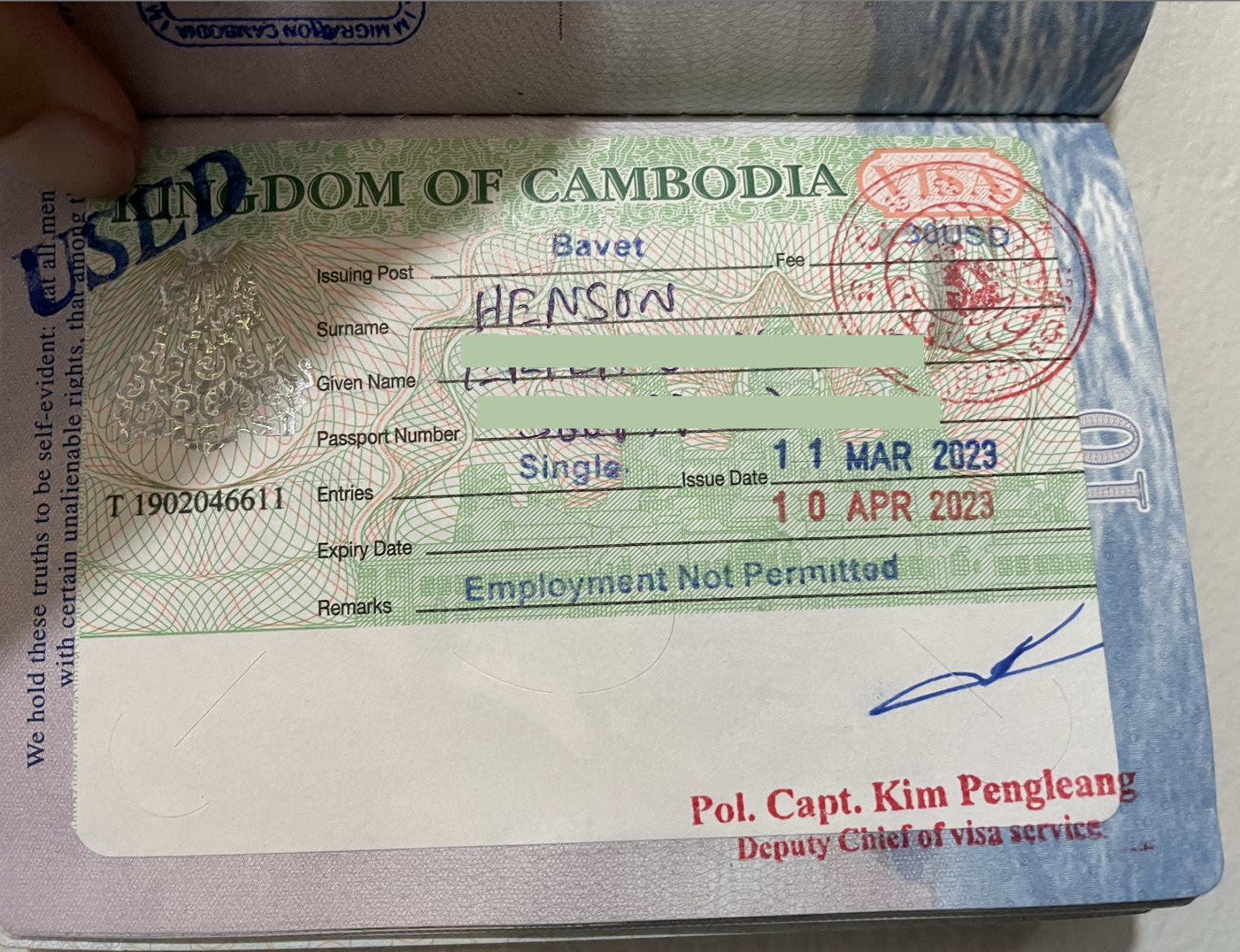
STEP 7 – GET STAMPED INTO CAMBODIA
After you have the visa sorted out, walk to the building next door, that has a sign for passport control. You will need to fill out the exact same arrival card you just filled out to get the visa, and we were instructed by the border guard to put “VIETNAM” in the “from” section, and “BAVET”, in the “final city” section.
Once your arrival card is filled out, walk to the passport control desks. They will ask to scan your fingerprints, take a photo of you, and stamp your passport. Immigration on the Cambodian side took less than 2 minutes to get through.
As we walked out of the building, a guard stopped us to take our temperature, but we didn’t have to show a negative COVID test or COVID vaccination paperwork.
STEP 8 – CELEBRATE BECAUSE YOU’RE IN CAMBODIA!
We walked around the parking lot for about 5 minutes to try and justify the $35 dollar visa fee we each just paid to NOT explore Cambodia. Spoiler alert: not much difference between a Cambodian land border parking lot and the Vietnamese land border parking lot.
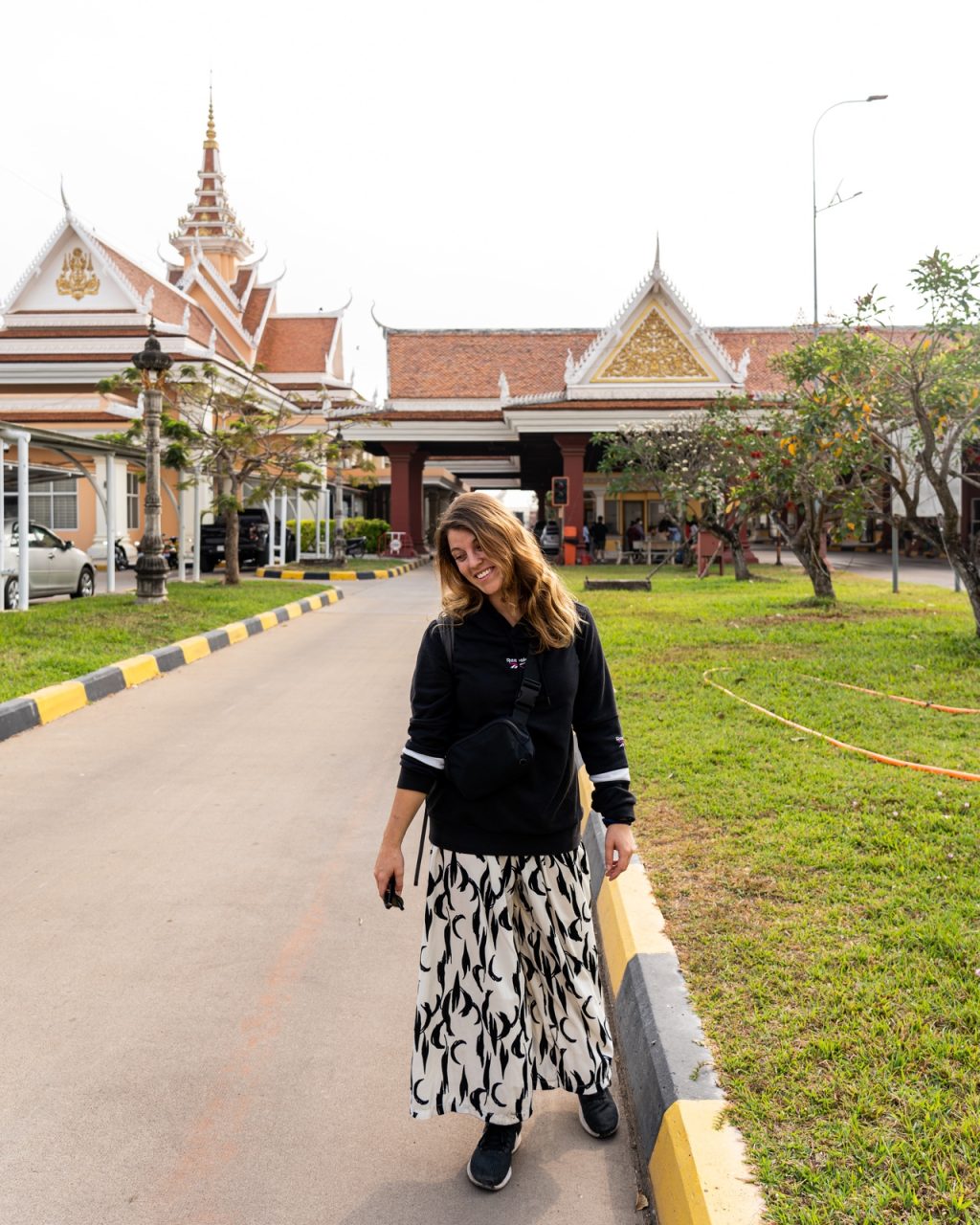
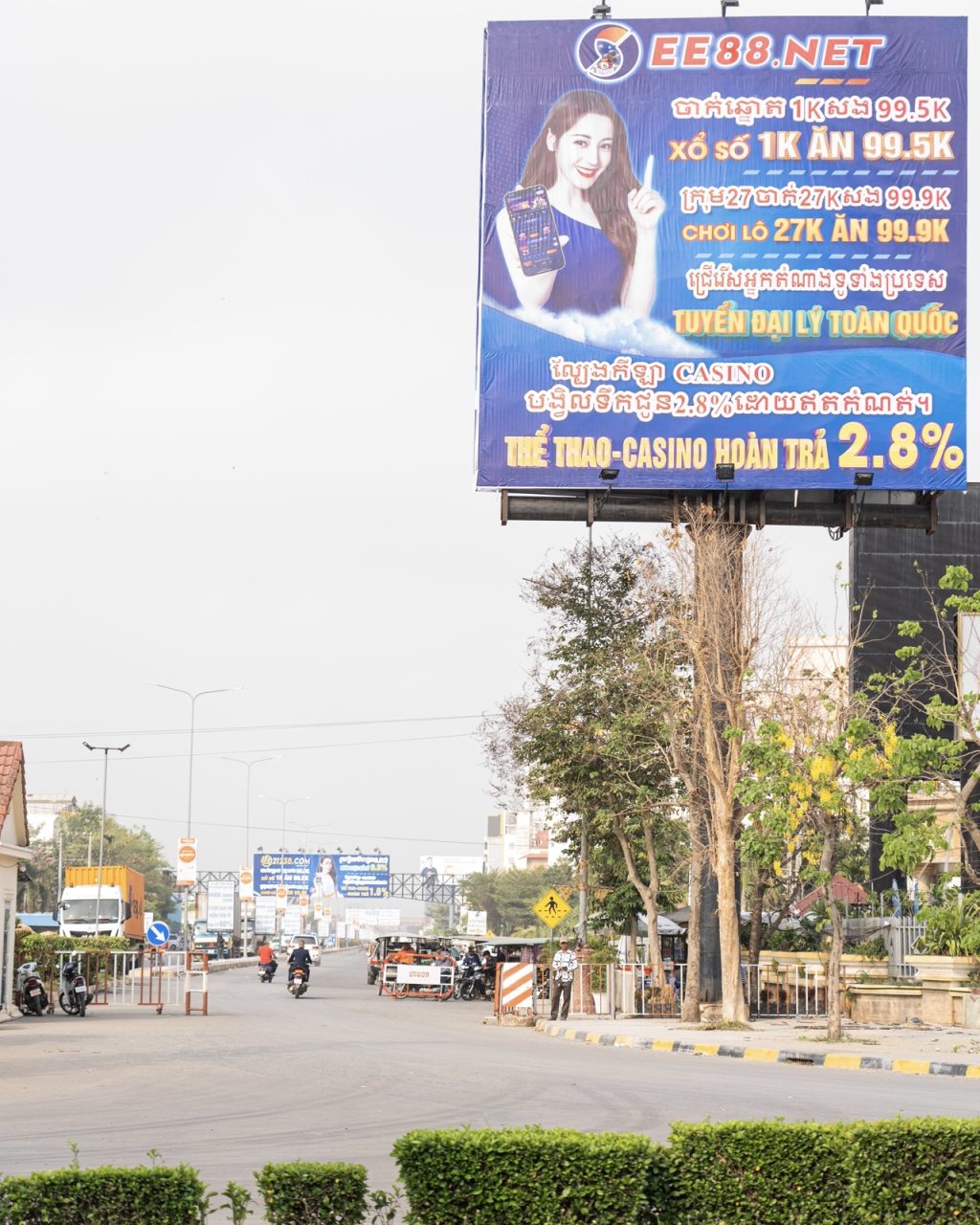
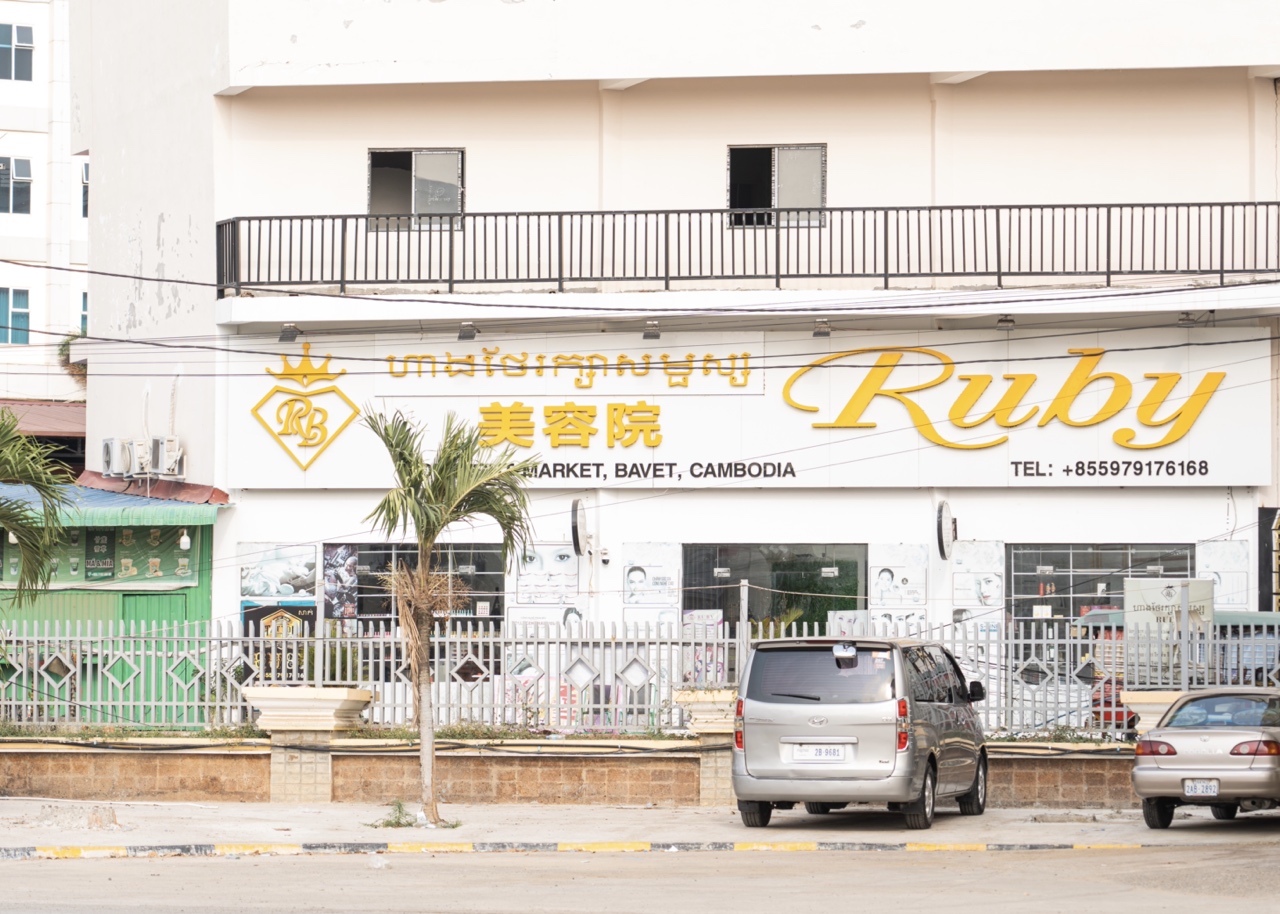

STEP 9 – GET STAMPED OUT OF CAMBODIA
Follow the signs for the exit procedure for Cambodia. The immigration officer took our passports, checked that we had a valid Vietnam eVisa to enter into Vietnam, and stamped us out of Cambodia.
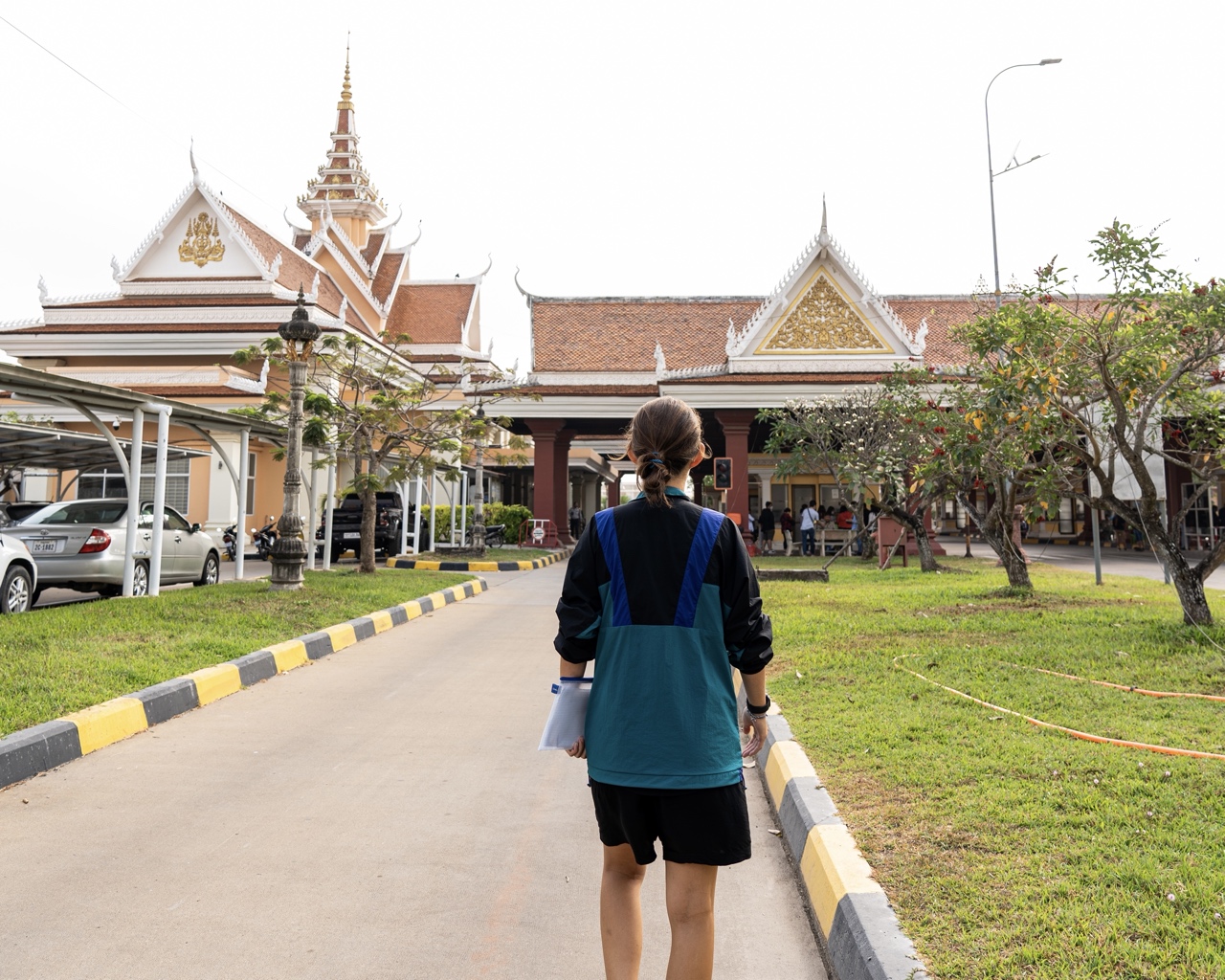
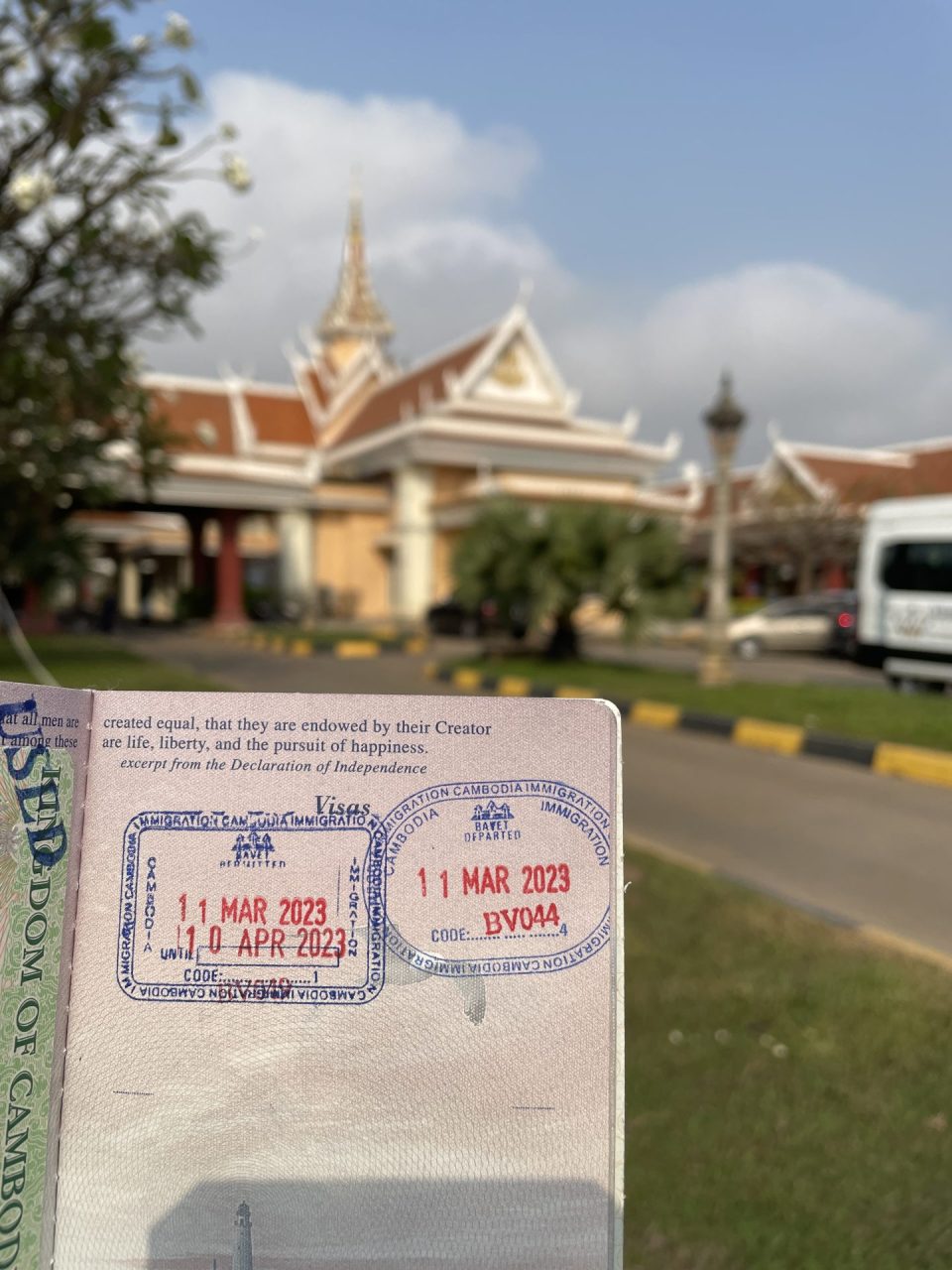
STEP 10 – NO MANS LAND 2.0
Walk back the way you came over that 100 metres of no mans land towards Vietnam.

STEP 11 – GET STAMPED BACK INTO VIETNAM
Back in the Vietnam immigration building, follow the signs for ENTRY PROCEDURE. The immigration officer will check that you have a) a valid stamp out of Vietnam, b) a valid stamp in and out of Cambodia, and a c) valid eVisa for the correct date & entry point. After you get your new entry stamp, you’re officially eligible for another 30 days of fun in Vietnam!
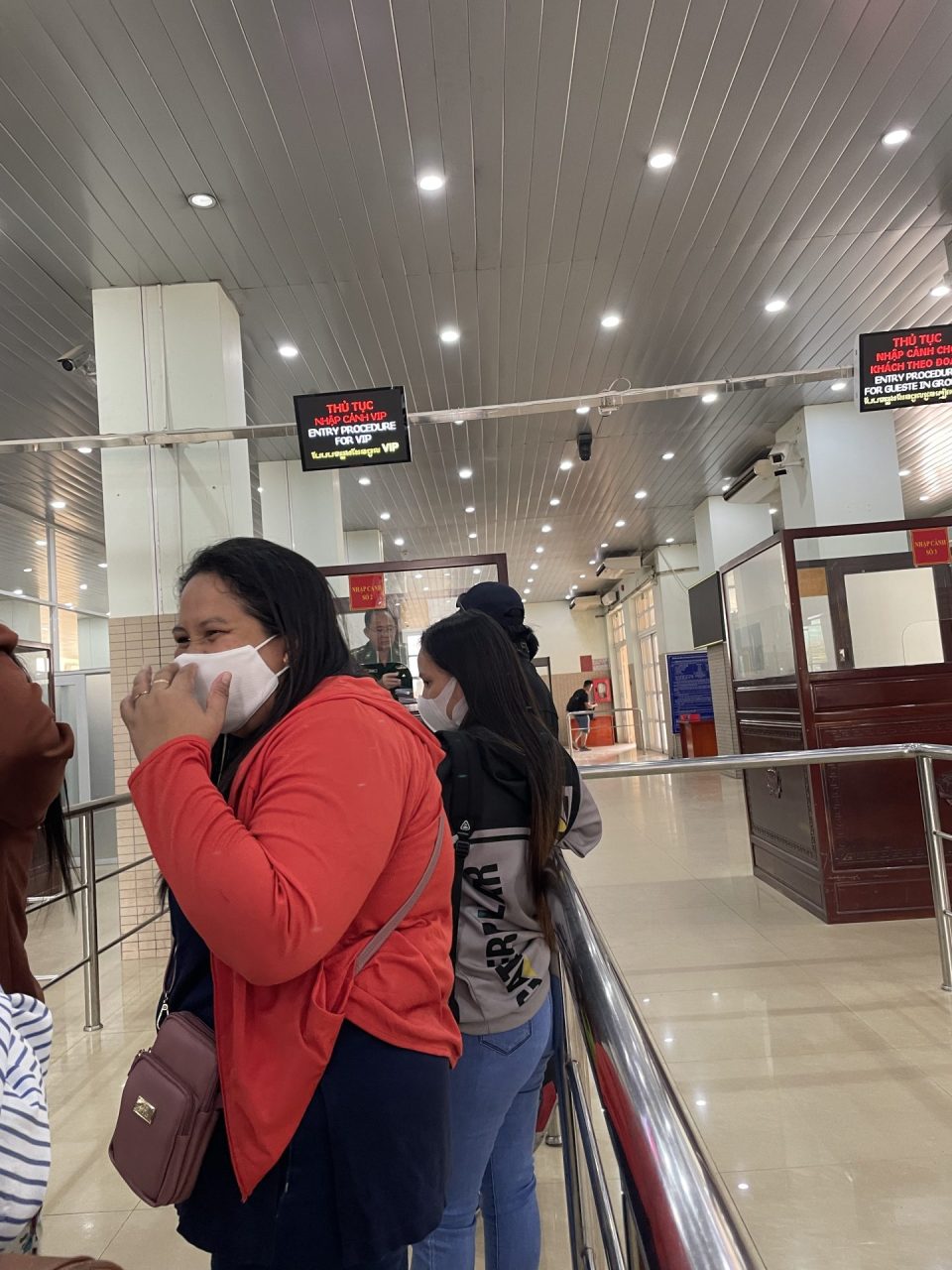
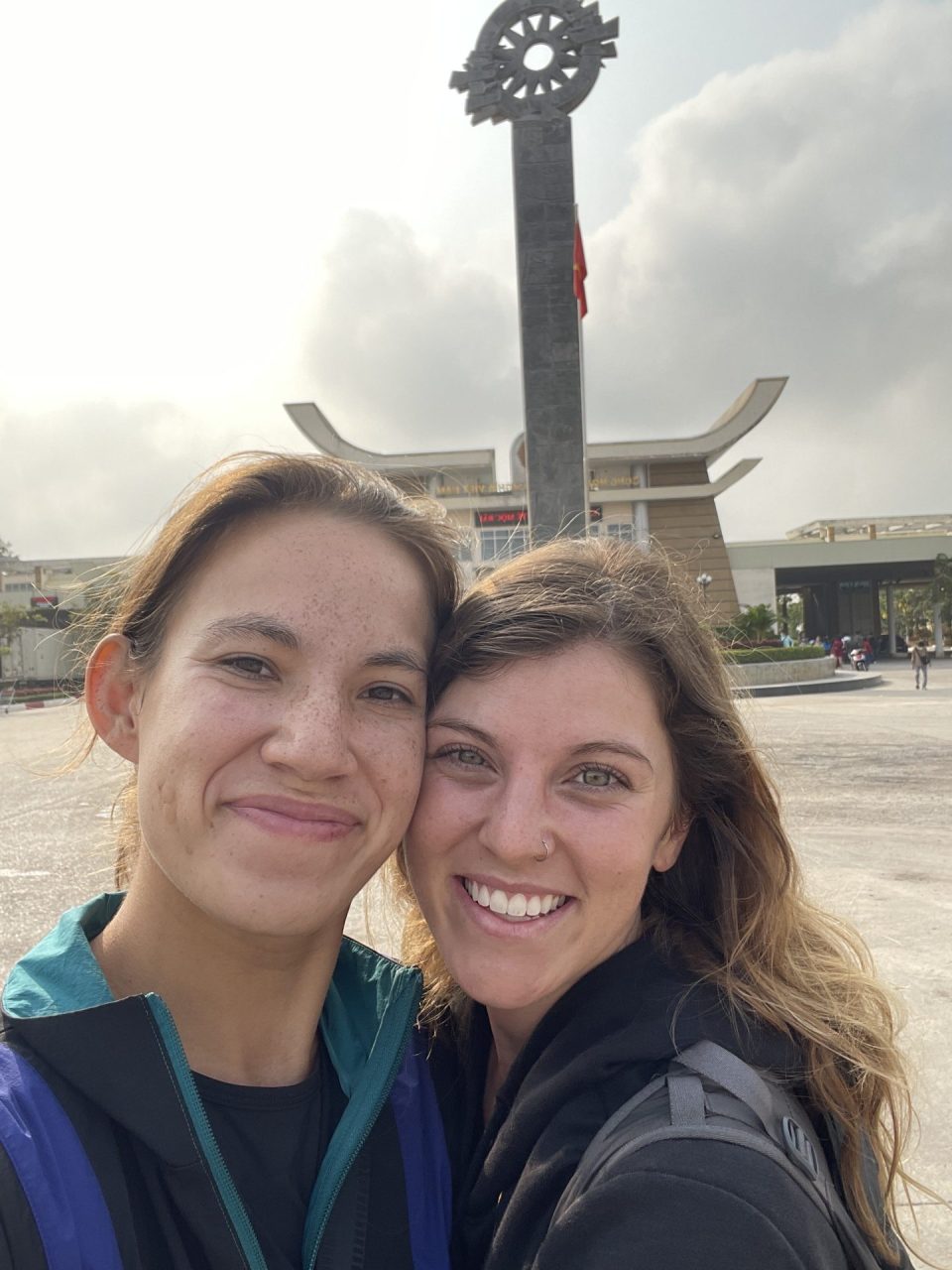
STEP 12 – DRIVE BACK TO HO CHI MINH
We went back to our scooter, and drove on our merry way back to Ho Chi Minh. The first bit of the drive is much easier, but once you get into the city it is absolute hell. Our GPS said that we were only 15 miles from our hostel, and the estimated time was over an hour. The traffic was so chaotic, with at least 3x the amount of cars we had seen this morning.
HOW MUCH DID IT COST?
Overall, the total cost of our visa run for the both of us was:
Vietnam eVisas: $50 USD ($25 USD/person)
Scooter Rental: $6.80 USD
Gas: $1.50 USD
Cambodian Visa on Arrival: $70 USD ($35 USD/person)
Grand Total: $128.30 USD
Although the drive was very hectic, we did end up saving a lot of money by driving ourselves. All of the companies that offer visa runs are at least $60 USD round trip per person, and that’s just for transportation. You still need to pay for your own Vietnam eVisas and Cambodian visas.
PUBLIC TRANSPORTATION OPTION
If driving your own scooter isn’t for you, we saw somebody post on Facebook (a few hours after we got back from the scooter ride from hell, too late for us!) that she found a few local buses that got her to the Moc Bai border. Here are the steps:
Take bus 4 or 27 from District 1 bus station to An Suong Bus Station – 6000 VND ($0.25 USD)
Purchase a ticket from the bus station towards Moc Bai – 100,000 VND ($4.22 USD)
It’s about a 15-20 minute walk from where the bus drops you off to the Moc Bai Border Crossing
Follow the same entry/exit procedures from Vietnam/Cambodia as listed above
Once you have re-entered Vietnam, flag down a taxi/motorbike at the border gate and have them take you here or here – 40,000 VND ($1.69 USD)
From either of these locations, you can buy a bus ticket back to An Suong Bus Station – 95,000 VND ($4.01 USD)
From An Suong, get a bus ticket back to District 1 – 6000 VND ($0.25 USD)
Total Public Transportation Cost: 247,000 VND ($10.43)
SHOULD YOU RENT A SCOOTER FOR YOUR VISA RUN?
Probably not! It’s a pretty long, hot, dirty, and stressful drive. Only do it if you’re very confident in your driving abilities. The worst part of the drive is in the city, so if you’re coming to HCM and you’re going to rent a scooter anyways, this is the cheapest way to get to and from the Moc Bai border.
We couldn’t find very much updated information about doing a visa run to Moc Bai in 2023, so we hope that this helps somebody out!

I must deeply thank you for this blog post as I am about to experience the visa run for the second time post covid and you provided me with all the information I needed to ease my way through this process!
Super grateful 🙏
Thank you so much for this kind comment! We’re so happy that our post was useful to you. Goodluck with your visa run!